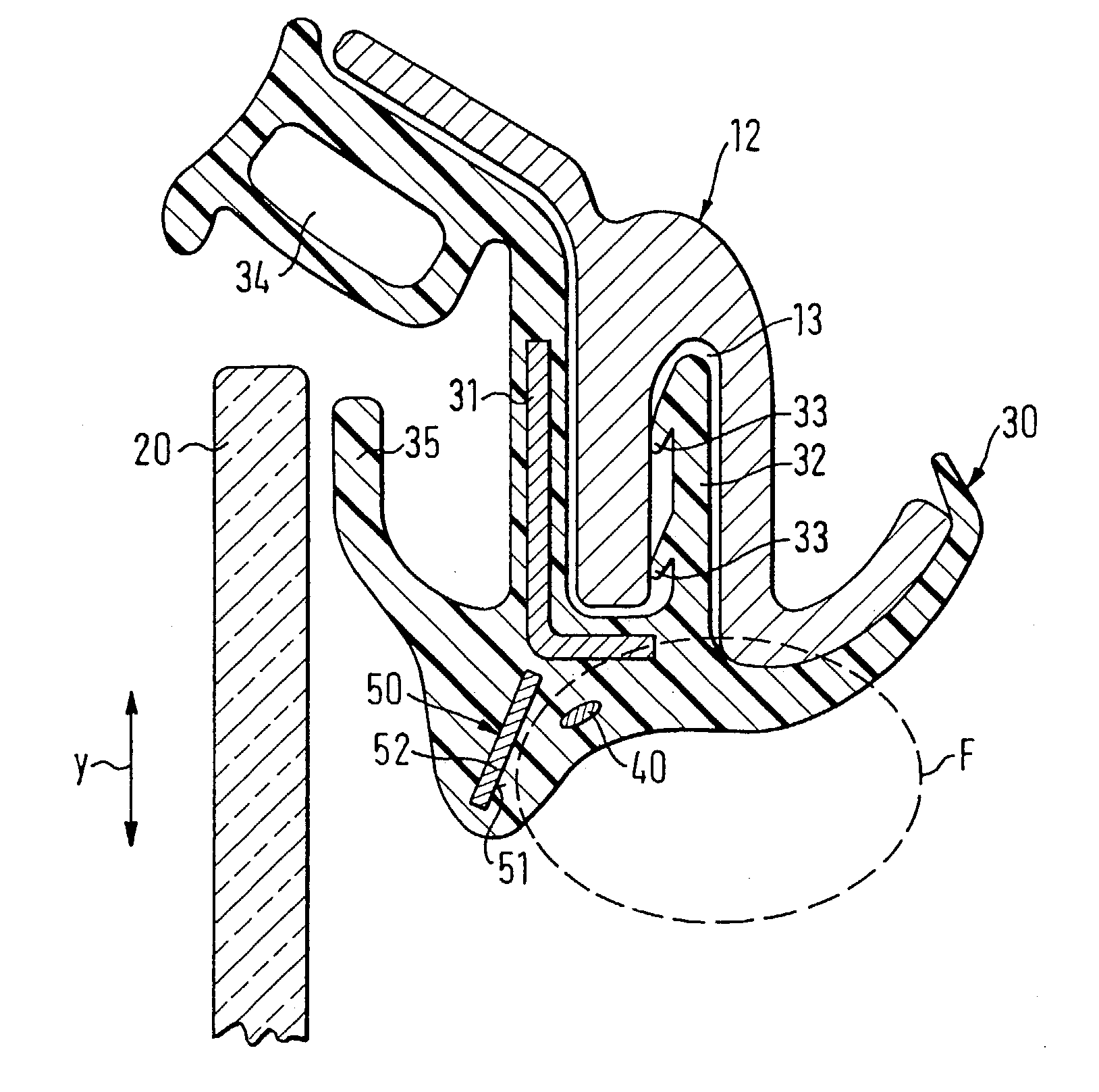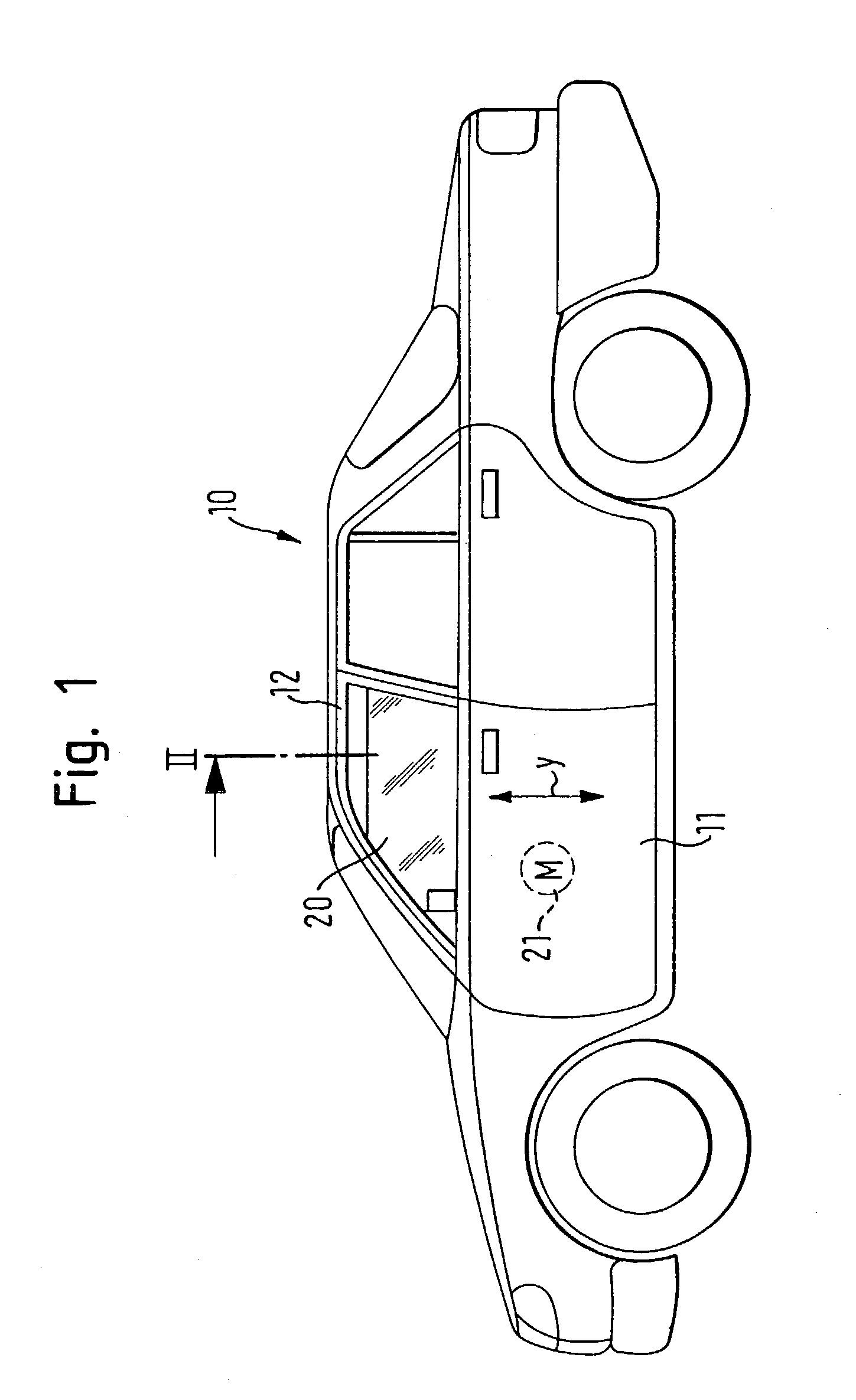Device for sensing an obstacle in the opening range of a closure element of a motor vehicle
a technology for closing elements and obstacles, applied in the direction of motor/generator/converter stoppers, dynamo-electric converter control, instruments, etc., can solve the problem of dispense of relativly complicated electronic compensating circuits
- Summary
- Abstract
- Description
- Claims
- Application Information
AI Technical Summary
Benefits of technology
Problems solved by technology
Method used
Image
Examples
Embodiment Construction
[0029]Referring now to FIG. 1 there is illustrated a motor vehicle 10 provided in the region of a front door 11 with a window pane 20 powered by an electric motor 21. The window pane 20 representing a closure element is powered in the direction y of the electric motor 21 between an open position and its closed position.
[0030]As evident from FIGS. 2a to 2d the front door 11 comprises a metal frame 12 to which a weatherseal 30 seals the window pane 20. The weatherseal 30 is made of an elastomeric material, for example ethylene propylene diene rubber (EPDM), and provided with a metallic carrier 31 to enhance its stiffness. In addition, the weatherseal 30 comprises a fastening section 32 extending along a channel 13 of the frame 12 and provided with retaining lip 33 for locating the weatherseal 30. In addition, the weatherseal 30 is provided with a cavity 34 and sealing lips 35 for guiding and sealing the window pane 20.
[0031]Furthermore, there is embedded in the weatherseal 30 an elect...
PUM
 Login to View More
Login to View More Abstract
Description
Claims
Application Information
 Login to View More
Login to View More - R&D
- Intellectual Property
- Life Sciences
- Materials
- Tech Scout
- Unparalleled Data Quality
- Higher Quality Content
- 60% Fewer Hallucinations
Browse by: Latest US Patents, China's latest patents, Technical Efficacy Thesaurus, Application Domain, Technology Topic, Popular Technical Reports.
© 2025 PatSnap. All rights reserved.Legal|Privacy policy|Modern Slavery Act Transparency Statement|Sitemap|About US| Contact US: help@patsnap.com



